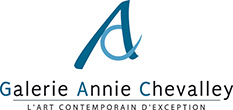Artist Statement
Indefined spaces where life ,existence event , time take irreversibly take place, concerned him deeply like an obsession and boosted his sense of creation ; these creative abilities were as follow : Antoine Leperlier was a painter, a sculptor, a drawer, a glassblower. Antoine was in search for an expressive form the perpepuity of which could wipe out the vanity of art facing time and where the beauty of things could infringe the time in space. That ambitious ideology was entirely accomplished by the artist . Molten glass, the origins of which cannot be traced back into the past .the process of making molten glass is an extremely old one its origins cannot be traced back into the past, the techniques, mysteries and aura involved seem to be the most important material Antoine used to refer to in his inspiration to describe the absolute.
"Molten glass records and makes history as well as it represents the process of recording" said Antoine Leperlier. Then he added :
"In my point of view, glass embodies the mental space in memory acts. It is necessary to pierce this stiff and rigid space to reach the times gone by."
Perhaps this is the reason why some of this works bear expressive headings Paced up time (temps arpenté), The shadow of an instant (Ombre d'un instant), Depth of an space (profondeur de l'espace ), Allegory of space /Allégorie de l'espace).
The tints and shades of some objects either brightly coloured or somewhat dim remind us of stone carving.The observer's mind gets struck with some reliquary – shaped creations, leading those who are willingly attracted by the imaginative world where space is boundless and where indepth, a breathtaking drop looks offending.
Biography
Antoine Leperlier was born in 1953, was initiated into glassblowing and molten glass techniques by his grand father François Decorchemont .
From 1968 up to his grand father ‘s death in 1971.whenever he cuould afford it between his studies and his work as a painter,he used to go and help his grand father in his workshop .
Antoine would never seriously give up painting, that was his first passion but glassblowing and molten glass were also involved in his existence.
And in 1979, he choses to open again his grandfather’s ovens and one year later his elder brother Etienne Leperlier joined him. Time, space and memory, started to take shape in the background of Antoine Leperlier’s works.
In 1980, he exhibited Janus whose face was turned both to the future and to the past …
Attracted by archaeological excavations, he used to search for symbols, objects, and forms that became outmoded throughout the millennia. Since 1983, he would differentiate himself from the family heritage to firmly adopt objects corresponding to his own taste, exclusively transparency and luminosity, came to existence.
Serious research allowed him to reduce the opacity of the molten glass.
He creates extraordinary pots within which he imprisoned Time !
Starting in 1982 Antoine Leperlier had exhibited in Decorative Arts Museum of Paris, Düsseldorf, Lausanne, Lucerne, Brussels, New York, Los Angeles, Strasbourg, Sapporo, Osaka etc... Antoine Leperlier as a Master glass artist.
Concepts and Materials
Contemporary Art and survival of the hierarchies between arts
"The Art, under cover of transcending the traditional division inherited from the Renaissance between" high art "and" minor arts ", reinstates, as a genre dominant institutional, deeper dichotomy between a" concept art "and a "art materials" or more precisely between what is art and what is not art.
The mode of production of contemporary art that has developed on the division of labor between designers and developers, mimics that of the goods; controlled by the cultural institution that takes care of his "free speech" and participates renewal lifestyles imposed by the market economy dramatically.
The artistic work on its part claims that, a means of freedom, autonomy and a sensitive approach to materials, is excluded from the Art on behalf of the dogma of the "Immaculate Conception". This dogma established by desublimation Duchamp's gesture, is the foundation of a new hierarchy of the arts."








